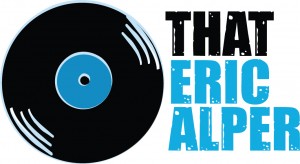Few albums have defined rock music as definitively as Physical Graffiti. Released in 1975 as Led Zeppelin’s first album on their own Swan Song Records, the double LP was a sprawling, genre-defying statement that combined new material with outtakes from earlier sessions. From the towering grandeur of Kashmir to the bluesy grind of Trampled Under Foot, the album remains one of Zeppelin’s most celebrated works. But even after decades of analysis, there are still details about Physical Graffiti that remain lesser known. Here are five fascinating facts about the album that even die-hard fans may have missed.
1. The Cover Was Almost Impossible to Make
The iconic Physical Graffiti album cover, featuring a New York City tenement building at 96 and 98 St. Mark’s Place, was designed to be interactive. The die-cut windows allowed different images to appear depending on the insert placed behind them—including pictures of the band, cultural icons, and abstract patterns. However, this ambitious design nearly derailed the album’s release. The complexity of manufacturing the sleeves caused significant production delays, pushing the release date from late 1974 to February 1975. Designer Peter Corriston had to work with printers to refine the process, ensuring that the cover remained durable and functional. The effort paid off—Physical Graffiti was nominated for a Grammy for Best Album Package.
2. “Kashmir” Was Written Before the Band Had Ever Been There
One of Zeppelin’s most epic and enduring tracks, Kashmir evokes vast, mysterious landscapes with its hypnotic riff and orchestral grandeur. But despite the title, none of the band members had actually visited Kashmir at the time of writing. Robert Plant penned the lyrics while on a drive through the barren desert regions of southern Morocco, feeling overwhelmed by the vastness and beauty of the scenery. The song’s signature riff came from a 1973 instrumental demo recorded by Jimmy Page and John Bonham, with John Paul Jones later adding Mellotron and orchestral elements.
3. “Trampled Under Foot” Was Inspired by Stevie Wonder
One of Physical Graffiti’s funkiest tracks, Trampled Under Foot is built around a relentless clavinet riff played by John Paul Jones. Many fans assume the track is pure Zeppelin blues-rock, but Jones later revealed that the inspiration came directly from Stevie Wonder’s Superstition. The band was captivated by Wonder’s use of the clavinet to create a syncopated groove, and Jones brought a similar approach to Zeppelin’s jam sessions. The lyrics, written by Robert Plant, are a playful nod to Robert Johnson’s Terraplane Blues, using car metaphors to explore themes of lust and desire. The song became a highlight of their live shows, often stretching past ten minutes in concert.
4. “Boogie With Stu” Was a Spontaneous Jam That Captured Led Zeppelin at Their Most Playful
Unlike the meticulously crafted epics on Physical Graffiti, Boogie With Stu was born out of pure spontaneity. During sessions at Headley Grange, the band invited Rolling Stones pianist Ian Stewart—affectionately known as “Stu”—to join in on a lively, off-the-cuff jam. The result was a rollicking, piano-driven boogie that showcased Zeppelin’s ability to cut loose and have fun in the studio. The track’s loose, barroom energy stands in contrast to the heavier material on the album, offering a glimpse into the band’s lighter side. It remains a fan favorite, proving that sometimes, the best moments come from simply hitting “record” and letting the music flow.
5. John Paul Jones Almost Left the Band Before Recording Began
While Physical Graffiti stands as a testament to Led Zeppelin’s creative peak, it almost never happened. Before recording sessions began in 1973, John Paul Jones was burned out from constant touring and considered leaving the band. Officially, it was reported that he was sick, but in reality, he had become disillusioned with the rock star lifestyle and was contemplating a quieter career as a choirmaster at Winchester Cathedral. It was Zeppelin’s manager, Peter Grant, who convinced Jones to take time off and return refreshed. His renewed enthusiasm helped shape the album’s diverse sonic landscape, particularly on tracks like Trampled Under Foot and In the Light, where his keyboard and arrangement skills were crucial.
Physical Graffiti remains one of the most ambitious and celebrated albums in rock history, a perfect blend of raw power, innovation, and musical craftsmanship. From its intricate artwork to its genre-spanning compositions, the album encapsulates everything that made Led Zeppelin legendary.







